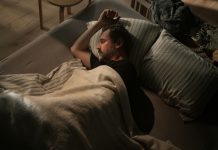
Imagine something scary happening to you, something so bad it makes you feel upset for a long time.
This is what happens to some people when they go through a really tough event. It’s called posttraumatic stress disorder, or PTSD for short.
It’s when you can’t stop thinking about the bad event, feel scared, or have nightmares, and it lasts for more than a month.
Sometimes, right after the event, people feel this way too, but it’s called acute stress disorder (ASD) if it’s within the first month.
A lot of people in the U.S. will go through something like this at least once in their lives. About 7 out of 10 people, in fact. While not everyone will have PTSD or ASD, those who do find it really hard to live their normal lives.
People who work in jobs where they see or experience scary things a lot, like soldiers or emergency responders, are even more likely to feel this way. But it’s not just them; about 4% of men and 8% of women in the U.S. will have PTSD at some point.
To help these people, two big organizations, the U.S. Department of Veterans Affairs (VA) and the Department of Defense (DoD), put their heads together to update some advice on how to treat PTSD and ASD.
They looked at everything again and came up with 34 new ideas on how to help. These ideas cover everything from figuring out if someone has PTSD or ASD, to how to prevent it, and how to treat it, including bad dreams and when someone has PTSD along with other problems.
One of the biggest things they said is that talking to a therapist is usually better than taking medicine for PTSD.
They talked about three specific types of therapy: cognitive processing therapy (CPT), eye movement desensitization and reprocessing (EMDR), and prolonged exposure (PE).
These therapies help people by making them talk about their experiences or think about them in a different way, which can make them feel better.
They did say some medicines could help, but they were very clear that certain things should not be used, like strong anxiety medicine, cannabis, or things made from cannabis.
And guess what? You don’t even need to be in the same room as your therapist for these treatments to work. They said it’s okay to use video calls for therapy if you can’t get to the therapist in person or if the therapy is proven to work over video.
The people who made these recommendations hope that by sharing this advice, doctors and therapists will be able to help those suffering from PTSD or ASD better.
They believe that by following these guidelines, they can make a big difference in improving the lives of those affected by traumatic events.
In short, the new guidelines are all about finding the best ways to help people feel better after experiencing something really scary.
By focusing on talking therapies and being careful with medicines, the hope is to make life a bit easier for those struggling with these tough memories.
If you care about mental health, please read studies about 6 foods you can eat to improve mental health, and B vitamins could help prevent depression and anxiety.
For more information about mental health, please see recent studies about how dairy foods may influence depression risk, and results showing Omega-3 fats may help reduce depression.
The research findings can be found in the Annals of Internal Medicine.
Copyright © 2024 Knowridge Science Report. All rights reserved.



